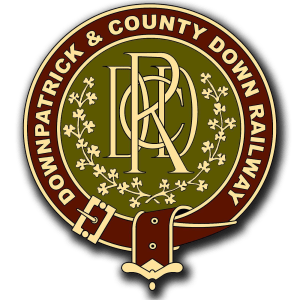
Michael Collins and the sections of rail uncovered in excavation
An ‘amazing’ discovery has been made at the Downpatrick & County Down Railway during construction works for a new museum building.
Eight length of wrought-iron ‘bridge rail’, dating from the construction of the original line from Belfast in 1859, have been unearthed as the foundations were being dug for the £500,000 carriage gallery building, funded by the Heritage Lottery Fund and the Northern Ireland Tourist Board.
Railway Chairman, Michael Collins, said, “We’re absolutely shocked but delighted by this discovery”
“This rail is a type that was used in the very early railways, it’s iron not steel, so was very prone to breaking and was phased out not long after the line from Belfast to Downpatrick was completed,” he adds, “therefore we know that these rails have to date from the time when the very first railway track was being laid from Belfast to Downpatrick.”
Mr. Collins continues, “Never in a million years did any of us expect to discover such a tangible link between us, and the opening of the line in 1859 – over one hundred and fifty years ago!”
The type of rail was used in a form of railway track known as “baulk road”, and was most famously but not exclusively used on Isambard Kingdom Brunel’s Great Western Railway line in England.
Mr. Collins says, “The Belfast & County Down Railway used it on all its lines from Belfast to Holywood, Comber, Ballynahinch, Downpatrick and Newcastle. ‘Baulk road’ was a continuously supported wrought iron rail – a ‘U’ shaped rail called bridge rail. It has wide flanges that could be bolted to the timber bearer, or a ‘longitudinal’ baulk. The two rails and their baulks would be tied together with smaller timbers”
He add, “By the end of the 19th Century stronger steel rails began to become available and the Belfast & County Down Railway began to replace all its Baulk Road track with the conventional rails and sleepers we see on our railway lines today.”
So how did this rail survive so long? Michael has a theory. “I suspect that when the Downpatrick signal cabin was being built, that these obsolete rails were used in its foundations, which would explain why they were buried so far below the surface of the ground. The were was also a lot of masonry debris around them, and the location fits, so that’s what I think.”
And what will become of the rails? “We certainly hope to incorporate these into the new Carriage Gallery – this building will have three tracks going into it, and we would hope to recreate a section of baulk road on one as a museum piece in its own right using these rails,” says Mr. Collins.
He continues, “It would be just wonderful to have a piece of track that you can point out to visitors as being from the time of the opening of the line to Downpatrick”.
